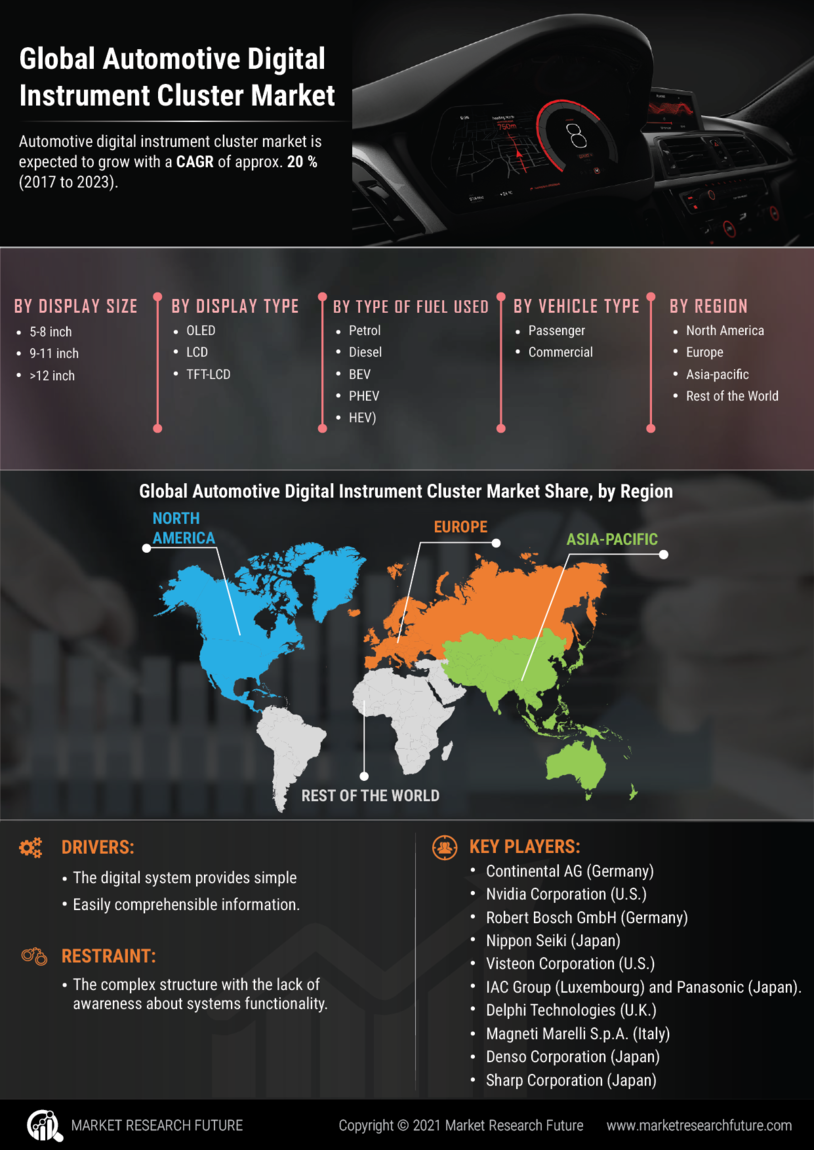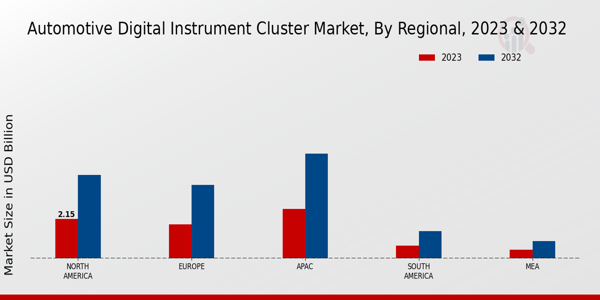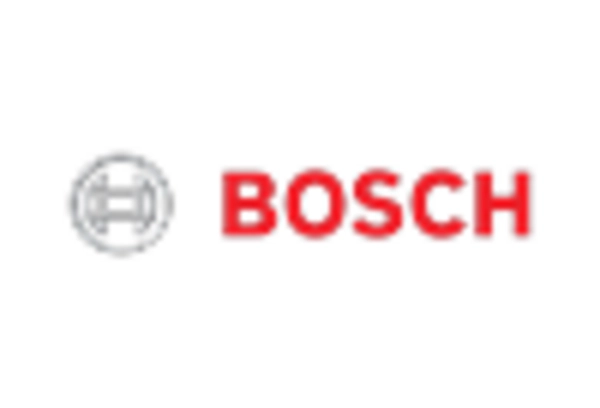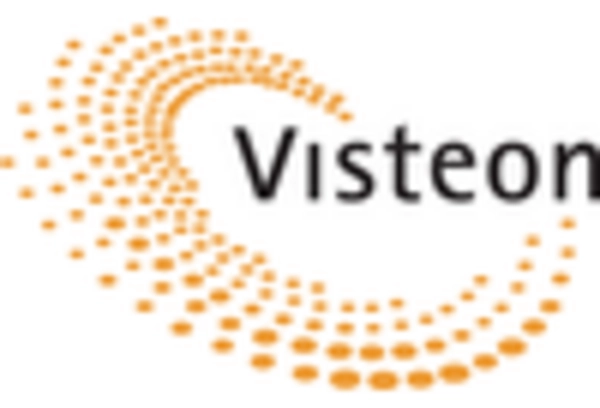Focus on Sustainability
The Automotive Digital Instrument Cluster Market is increasingly aligning with sustainability initiatives, as manufacturers strive to reduce their environmental impact. The shift towards electric vehicles (EVs) is a significant factor, as these vehicles often feature advanced digital clusters that provide essential information about battery life and energy consumption. As of 2025, the market for digital instrument clusters in EVs is expected to expand significantly, reflecting a broader industry trend towards eco-friendly technologies. This focus on sustainability not only meets regulatory requirements but also resonates with environmentally conscious consumers. The integration of sustainable materials in the production of digital clusters further enhances this trend, indicating a comprehensive approach to sustainability within the automotive sector.
Enhanced Safety Features
Safety remains a paramount concern in the Automotive Digital Instrument Cluster Market, with manufacturers increasingly incorporating advanced safety features into digital displays. Features such as collision warnings, lane departure alerts, and adaptive cruise control information are becoming standard in modern vehicles. The integration of these safety features into digital clusters not only improves driver awareness but also contributes to overall road safety. Data suggests that vehicles equipped with advanced safety technologies can reduce accident rates by up to 30%. As consumer awareness of safety issues grows, the demand for vehicles with enhanced digital instrument clusters is likely to increase, driving market growth. This trend underscores the importance of safety in the design and functionality of automotive digital displays.
Growing Demand for Connectivity
The Automotive Digital Instrument Cluster Market is witnessing a surge in demand for connectivity features, driven by the increasing reliance on smartphones and other connected devices. Consumers expect seamless integration between their vehicles and personal devices, leading to the incorporation of features such as smartphone mirroring and real-time traffic updates in digital clusters. As of 2025, the market is projected to see a significant increase in the adoption of connected vehicle technologies, with estimates suggesting a growth rate of around 10% annually. This connectivity not only enhances the driving experience but also allows for over-the-air updates, ensuring that digital clusters remain current with the latest software and features. The emphasis on connectivity is likely to shape the future of the automotive industry, making it a critical driver in the digital instrument cluster market.
Customization and Personalization
Customization and personalization are becoming pivotal in the Automotive Digital Instrument Cluster Market, as consumers increasingly seek tailored experiences in their vehicles. The ability to modify display layouts, themes, and information according to individual preferences is gaining traction. This trend is supported by data indicating that nearly 60% of consumers express a desire for personalized vehicle interfaces. As automakers recognize this demand, they are investing in flexible digital platforms that allow for extensive customization options. This shift not only enhances user satisfaction but also fosters brand loyalty, as consumers are more likely to choose vehicles that reflect their personal style and preferences. The market's growth trajectory suggests that personalization will continue to be a key driver in the coming years.
Integration of Advanced Technologies
The Automotive Digital Instrument Cluster Market is experiencing a notable shift towards the integration of advanced technologies such as augmented reality and artificial intelligence. These technologies enhance the user experience by providing real-time data and navigation assistance, which is increasingly demanded by consumers. As of 2025, the market is projected to grow at a compound annual growth rate of approximately 8.5%, driven by the need for more interactive and informative displays. The incorporation of features like voice recognition and gesture control further elevates the functionality of digital clusters, making them more appealing to tech-savvy consumers. This trend indicates a significant transformation in how drivers interact with their vehicles, suggesting that manufacturers must adapt to these technological advancements to remain competitive.


















Leave a Comment